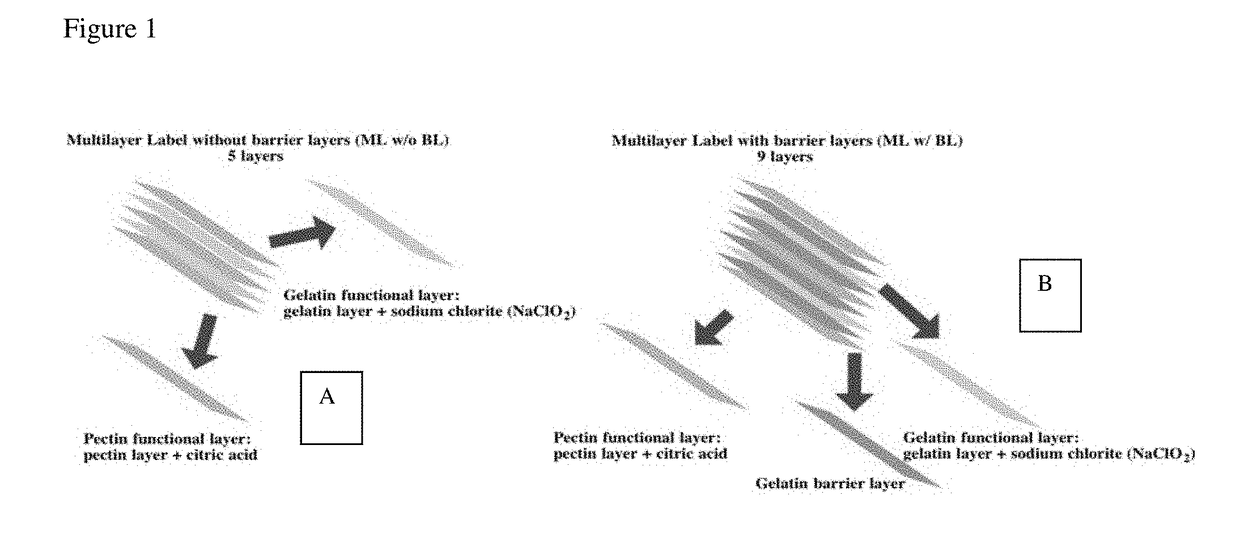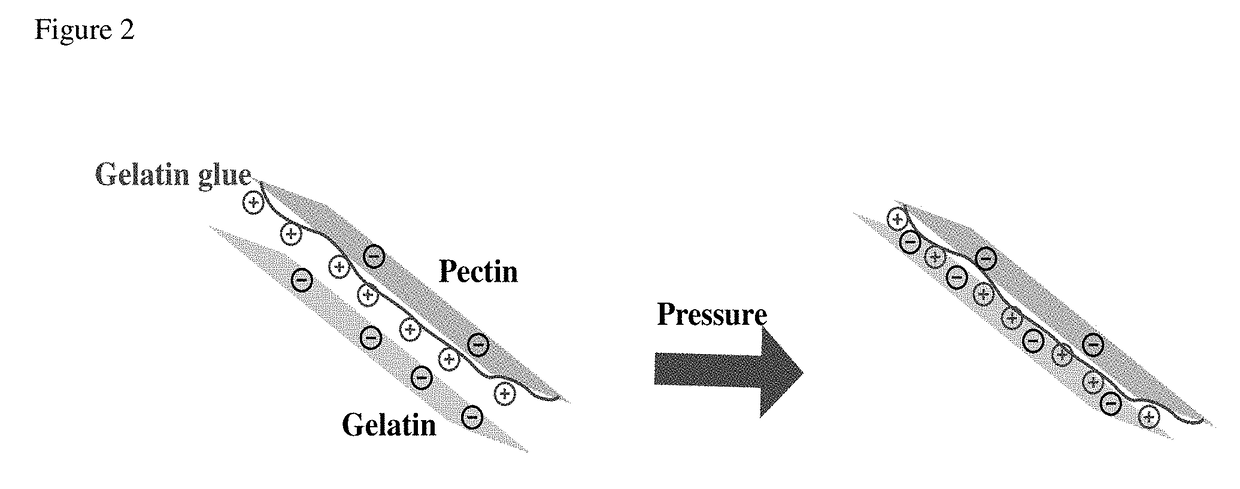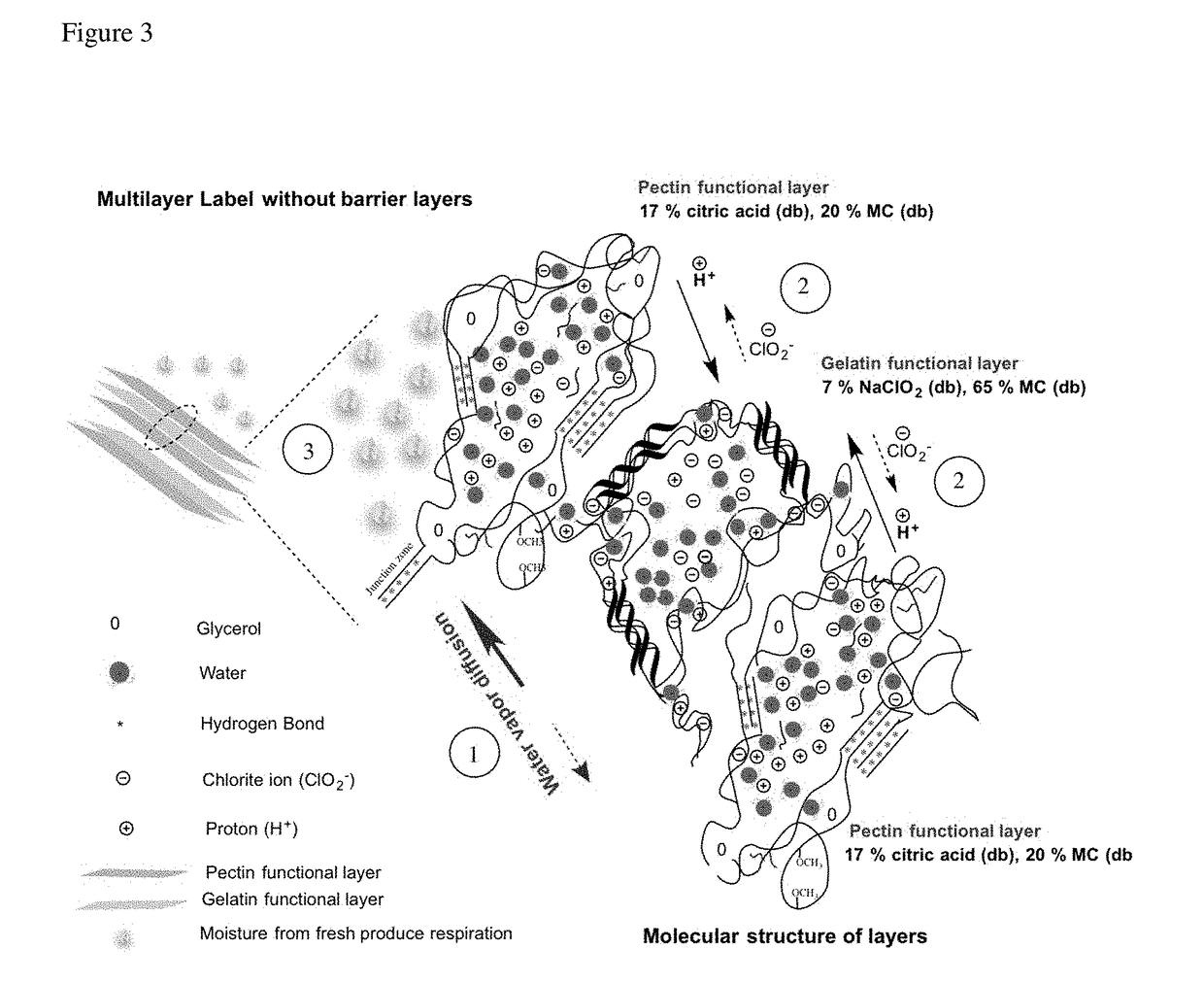Chlorine Dioxide Gas Releasing Package Label Insert for Enhancing Microbial Safety of Food
a technology of chlorine dioxide and package inserts, which is applied in the directions of transportation and packaging, food science, and containers preventing decay, etc., can solve the problems of increasing the risk of premature reaction prior to use, unable to penetrate inaccessible areas such as pores, channels and crevices, and expensive operation
- Summary
- Abstract
- Description
- Claims
- Application Information
AI Technical Summary
Benefits of technology
Problems solved by technology
Method used
Image
Examples
examples
[0042]After activation, the labels (prepared as described above) were transferred into 40 mL Environmental Protection Agency (EPA) amber glass vials assembled with 24 mm Miniret Valves and containing 3 mL of distilled water. Moisture vapor generated during incubation mimicked water vapor released from fresh produce respiration and stimulated sustained release of ClO2 from the labels.
[0043]Quantitative Determination of ClO2 from Biobased Labels: The concentrations of gaseous ClO2 in the headspace of the vial and dissolved in water were quantified at each sampling time. Headspace ClO2 was the amount generated from the label into the headspace and dissolved ClO2 represents the amount that found its way to the water phase. Total ClO2 concentration computed as the sum of both concentrations accounted for all ClO2 in the system. For headspace sampling, 1.5 mL of chilled (7° C.) distilled water were first drawn into a 3 mL syringe, then the tip of this syringe was inserted into the vial sa...
PUM
 Login to View More
Login to View More Abstract
Description
Claims
Application Information
 Login to View More
Login to View More - R&D
- Intellectual Property
- Life Sciences
- Materials
- Tech Scout
- Unparalleled Data Quality
- Higher Quality Content
- 60% Fewer Hallucinations
Browse by: Latest US Patents, China's latest patents, Technical Efficacy Thesaurus, Application Domain, Technology Topic, Popular Technical Reports.
© 2025 PatSnap. All rights reserved.Legal|Privacy policy|Modern Slavery Act Transparency Statement|Sitemap|About US| Contact US: help@patsnap.com



